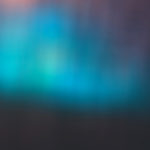
Putting A Movie Camera In a TV Gimbal
Posted on Jul 19, 2010 by Alex Fice
Putting a Sony F23 on a gimbal designed for a 950 wasn’t’ easyOn New Years Day this year our HD Gyron finally arrived back from it’s 12 month rebuild in Bob Nettmann’s workshop in LA, the place where Hollywood calls when it wants the very best in camera stabilisation.
A year earlier the gimbal had been almost written off in the near sinking of the Royal Navy ship from which we’d been flying in Antarctica. After a week submerged in a mixture of sea water and ship’s sewage the original F950 camera was consigned to a skip and the decision made to rebuild around an F23.
The exterior of an aircraft gimbal cannot be changed without new and expensive certification so it was essential the F23 be fitted into the same space as that left by the much smaller optical block of the F950. The task of performing this engineering magic was passed to Nettmann’s senior engineer Mike Sayovitz and his handiwork is truly amazing. Only a millimetre’s clearance now separates the moving camera from the surrounding shell and although connectors have been re-engineered to half their size, the actual camera has not been altered in any way.
Rebuilding the slip-ring also gave Mike the opportunity to install an optical fibre feed for the picture signal. The weak link of all of HD gimbals is getting a clean picture signal out of the gimbal though a 360 degree slip ring. High bandwith signals and sliding electrical contacts don’t mix and all conventional gimbals exhibit some picture noise. By taking the 4:4:4 output as a dual link optical signal multiplexed in a single fibre it was possible to simply shine the light beam through a hole in the middle of the slip-ring with zero electromagnetic interference.
We didn’t wait long after our January 1st delivery to use the system for real. Flying snow covered mountain ridges for the BBC series Landscapes of Scotland and Men of Rock not only proved the stabilisation was solid but that the picture signal was as clean as a whistle. The high contrast of sun and shadow on snow was also an ideal test for the remarkable dynamic range of the F23 and its hyper-gamma curves.
Renamed the Gyron Cine-G by Bob Nettmann, the gimbal is now an even better partner for our S-Two uncompressed data recorder. A noise free, 14 bit log picture recorded as 4:4:4 uncompressed DPX data – it doesn’t get much better than that. And by the time these words hit the press it’ll be up in the Arctic on both a boat and a helicopter for the BBC NHU’s Frozen Planet series.








